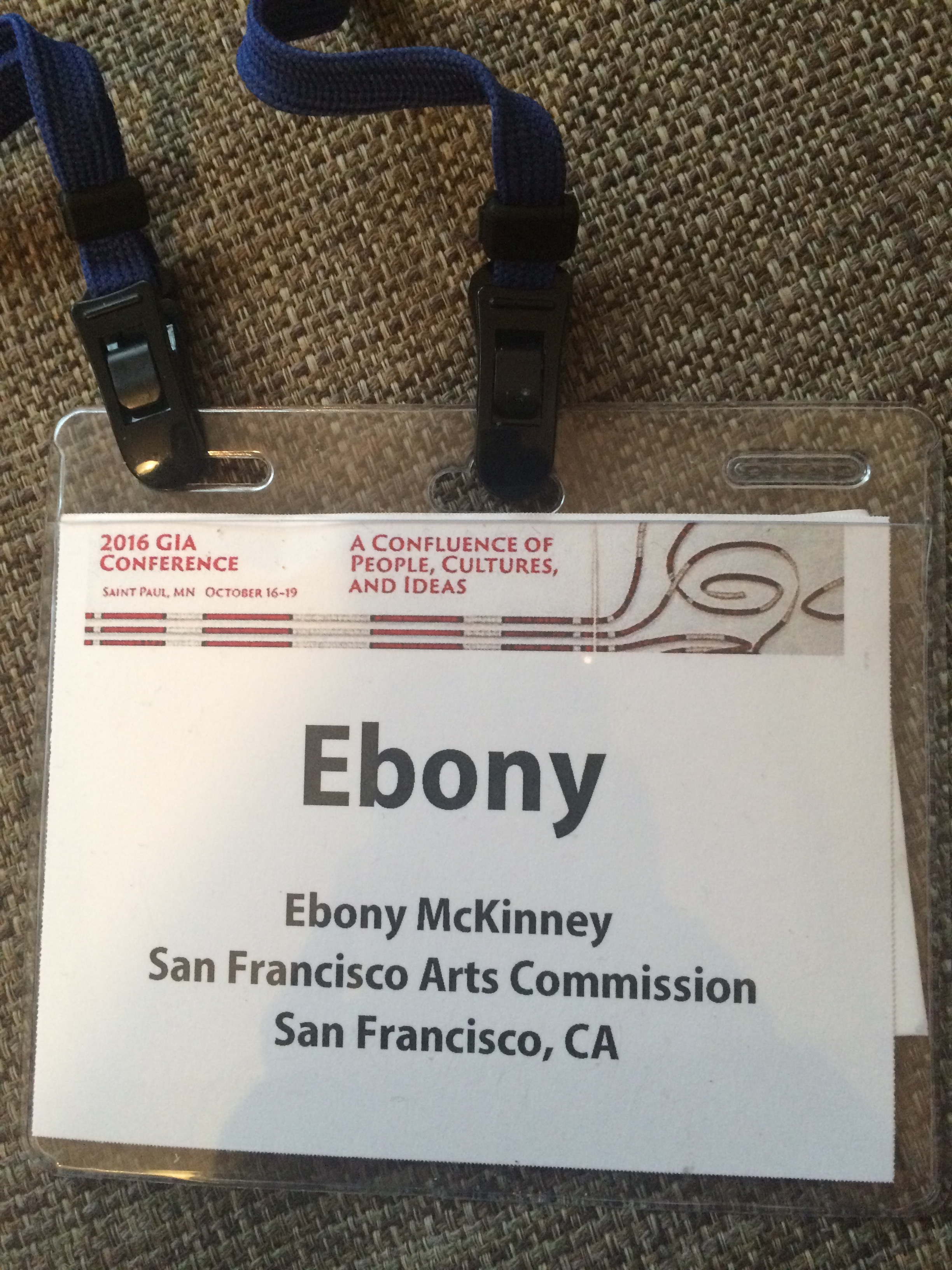Offering Space, Unbound Arts and Dynamic Resources

“How do we ensure equity and inclusion are at the core of our curatorial process and financial models?” was the question at the center of Eyenga Bokamba’s quest to remake Intermedia Arts and it became the core question of the conference for me.
In my final post, I’ll share a few broad themes that stuck with me. We may not have reached the tipping point toward equity quite yet, but I’m encouraged and grateful to be involved in this work with you. Yes YOU!
OFFERING SPACE
I can’t let go of the idea of space. It’s lingered with me since artist Barak adé Soleil brought it up at the Building Equity in Support for Individual Artists preconference. His unique perspective, that of a black, queer, cis gendered, disabled choreographer, underscored the layers of Tetris-like maneuvering he undergoes whenever attempting to cross a busy street, or other more philosophically constrained space. “What is the real way of grounding ourselves and opening the space?” he asked while advocating for both an awareness of physical space/hospitality and a “deepening complexity of identity.”
How can I become more aware of physical or language barriers to information or resources? What categories or characterizations limit expressiveness? How can I welcome work that links justice and beauty or tradition and innovation? In what ways, small and large, can I create inclusive platforms, move out of the way and support artists who then thrive?
Lastly, on the subject of space: in my opinion, the first day (which was the preconference) could have used additional space for processing and reflection. Deep dives into equity can be emotionally complex and bring up gaps in perspective and word. Time to breathe and respond can catalyze collective learning.
UNBOUND ARTS
The arts continue to help galvanize, unify and provoke as we saw in the sessions and plenaries, but what can be done to support an artist’s fruitful, lifetime of work?
“We need to unfetter productivity and citizenry,” commented Angie Kim of the Center for Cultural Innovation at the Artists and the New Economy session. The inequities that exist in the arts mirror those in greater society, therefore greater alignment outside of the arts is called for to tackle challenges around health care, debt, affordable housing, mentioned Jason Schupbach. Technology has the potential to energize and democratize the creation, distribution and consumption of work, but inequities, blockages and divides still exist. Also, in this the sharing economy, some small and mid-sized organizations may be able to achieve greater cultural, artistic and financial buoyancy by engaging shared back office support as demonstrated by a panel organized by The Kenneth Rainin Foundation. How might a broader movement toward sharing strengthen culturally specific, community and experimental arts organizations?
I am fascinated by the idea of creating a flexible work infrastructure for a flexible age. The AZ Art Worker Network, supported by the Arizona Commission on the Arts, helps bring together artists and mentors and facilitates knowledge sharing and access to high quality training. Local artists are enriched, meaningful relationships form and communities are better connected. Though I wasn’t able to attend it seems the next generation of arts leadership – networked, multi-generational, multicultural and collaborative, presented by The William and Flora Hewlett Foundation also highlights the pervasive benefits of networks.
DYNAMIC RESOURCES
When framing conversations around the new economy, several grantmakers and arts organizations adopted a dynamic view of deploying and engaging resources by collaborating on training programs and utilizing a larger tool-box of resources to support entrepreneurship – real capital, start up, bridge, and equity investment. It is a compelling idea that the team at The Kresge Foundation also explored in a well-attended (well reviewed) session on social impact investing. Are we moving into a mindset of greater abundance? I hope so, but as we move closer to these new scenarios Judilee Reed’s caution rings in my ears – “We have to make sure we are creating an environment for those [activist] artists to build creative practice over time and in absence of an extractive economy.”
How can funders bring together complementary resources in a way that is not transactional and develops new ways to assess value that is beautiful, just, healthy, aligned with the environment and/or economically viable?
I left GIA appreciative of my colleagues’ intelligence, curiosity and commitment and eager to glean what I can from Detroit’s resilience next year.
